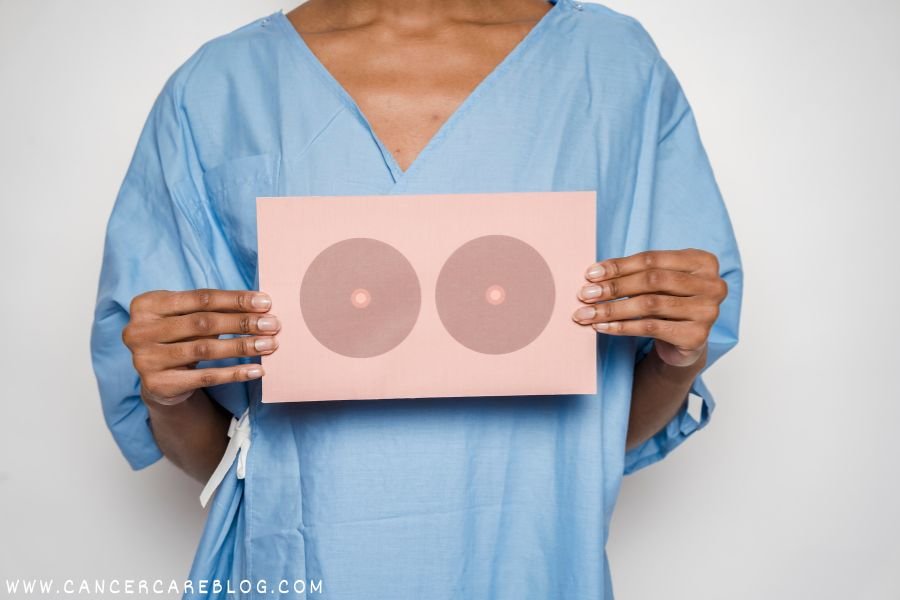Not all breast cancers are the same. Some respond well to hormone therapy. Others don’t. One of the most aggressive types is called triple-negative breast cancer (TNBC).
It hits harder. It spreads faster. And it’s harder to treat.
In this blog, I’ll break down why triple-negative breast cancer is so different, what makes it a challenge, and how doctors are working to fight it better today.
What Is Triple-Negative Breast Cancer?
To understand why TNBC is hard to treat, we first need to know what it is. Most breast cancers are tested for three things:
- Estrogen receptor (ER)
- Progesterone receptor (PR)
- HER2 protein
These are fuel sources. If a tumor has them, doctors can block them with medications.
But in triple-negative breast cancer, all three are missing. That means:
- It’s hormone receptor negative
- It’s HER2 negative
- And it has no known fuel source to block
This makes TNBC harder to treat using traditional therapies like hormone blockers or HER2-targeted drugs.
Why Is Triple-Negative Breast Cancer So Challenging?
1. No Targeted Therapy
Most breast cancers can be slowed down by blocking hormones. But TNBC has no targets for hormone therapy or HER2 drugs.
2. Faster Growth and Spread
TNBC is known as one of the most aggressive breast cancer types. It often:
- Grows quickly
- Spreads earlier to lungs, liver, or brain
- Comes back (recurs) within 3–5 years
3. Limited Treatment Options
Chemotherapy is still the main treatment. But chemo comes with harsh side effects and doesn’t work for everyone.
4. Higher Risk in Younger Women
TNBC often affects women under 40, especially Black women and those with BRCA1 mutations. It tends to strike earlier and harder.
Symptoms of Triple-Negative Breast Cancer
Symptoms of TNBC are similar to other breast cancers, including:
- A new lump in the breast or armpit
- Swelling or thickening in part of the breast
- Change in size or shape of the breast
- Dimpling of breast skin
- Nipple discharge (not breast milk)
But due to its speed, TNBC can progress faster, making early detection critical.
How Is Triple-Negative Breast Cancer Diagnosed?
Doctors perform several tests to diagnose TNBC:
- Mammogram or Ultrasound: To detect the lump
- Biopsy: A small sample of the tumor is removed and tested
- Receptor Testing: Determines if the tumor has ER, PR, or HER2
Only if all three tests come back negative, it’s classified as triple-negative.
TNBC Treatment Challenges
Since TNBC doesn’t respond to hormone therapy, treatment depends on:
1. Chemotherapy
Still the primary option for shrinking or killing the tumor, especially before surgery (neoadjuvant) or after surgery (adjuvant).
2. Immunotherapy
Some newer drugs like Atezolizumab are used with chemo, but only work for certain patients with a marker called PD-L1.
3. PARP Inhibitors
Useful if the patient has BRCA mutations, these drugs like Olaparib stop cancer cells from repairing themselves.
4. Clinical Trials
Because TNBC is so aggressive, many patients consider clinical trials for access to newer therapies.
Coping With a TNBC Diagnosis
A diagnosis of triple-negative breast cancer can feel overwhelming. But here’s what can help:
- Act quickly: Don’t delay scans, second opinions, or treatment
- Ask about genetic testing: Especially for BRCA mutations
- Explore all treatment paths: Including clinical trials
- Lean on support groups: Emotional support is just as vital
Common Questions About TNBC
Q: Is triple-negative breast cancer curable?
A: Yes—especially if caught early. But it has a higher chance of recurrence in the first 5 years.
Q: Who’s most at risk?
A: Black women, younger women, and those with BRCA1 mutations are at higher risk.
Q: Can lifestyle help?
A: A healthy diet, exercise, and stress management may help improve outcomes, but they can’t replace treatment.
Conclusion
Triple-negative breast cancer is tough—but not unbeatable. It doesn’t have easy targets for treatment, but research is moving fast. New therapies and trials are bringing hope to thousands.
If you or someone you know is facing TNBC, stay informed, act early, and ask questions. That knowledge is power—and it can save lives.
Sources



